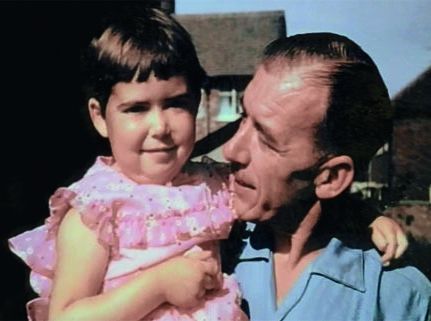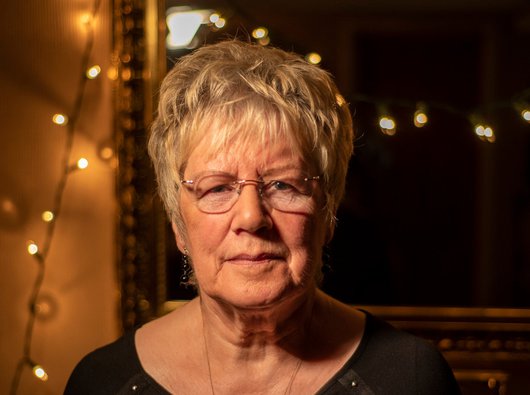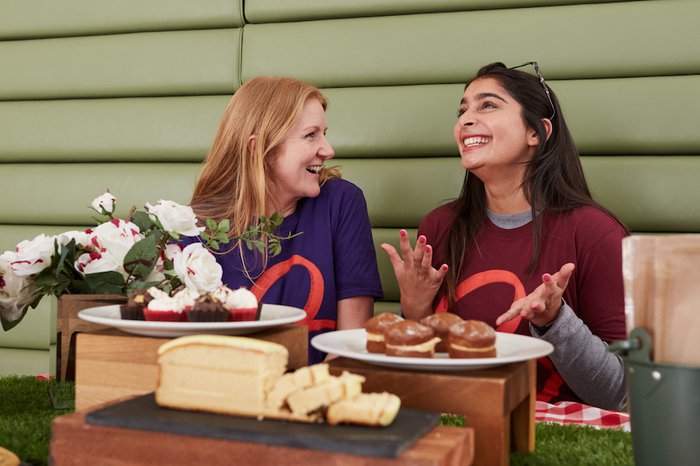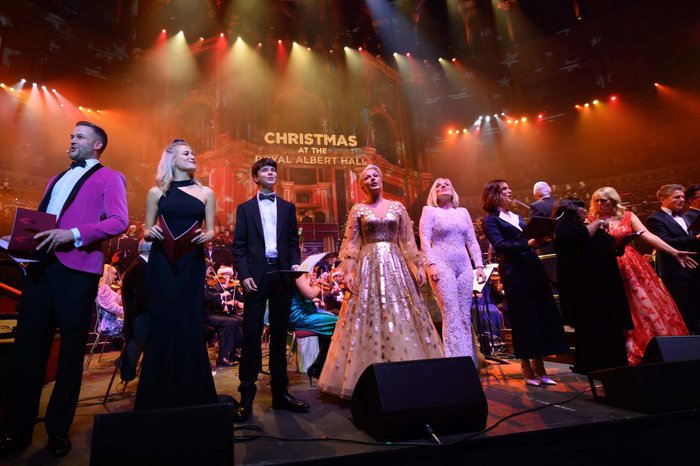Our history
How one family's determination to change the future for people affected by blood cancer still guides everything we do today.
We started in response to a tragedy
Susan Eastwood was diagnosed with leukaemia in 1960 at the age of just six and died just a few weeks later. Her parents, David and Hilda, were devastated, but also determined that something positive would come from their daughter’s death.
Because of Susan
Susan Eastwood's death from leukaemia led her family to set up Leukaemia Research Fund, now called Blood Cancer UK.

Susan and David Eastwood
A positive legacy
They wanted to stop other people from going through what they had been through, and so they started raising money to find a cure.
Blood Cancer UK is their legacy.
How we began
We started in the Eastwood living room with Susan’s parents sewing “two-bob” hankies, selling them in their community and raising £12 for Great Ormond Street Hospital.
Following that initial donation, they were contacted by other families who had also lost loved ones to blood cancer. Within a year they’d raised over £3,000 to set up the first leukaemia research unit at Great Ormond Street.
In 1962 the Leukaemia Research Fund (as we were then known) became a registered charity.
As the 1960s progressed, the families that had joined with the Eastwoods were joined by hundreds, and then thousands, more people. By 1970, our annual income was £118,705 and we had 48 local branches across the country.
Most of those who got involved were ordinary people who, like the Eastwoods, had been affected by blood cancer and wanted to make positive change. We were also joined by some famous names, and in 1971 we held our first concert at the Royal Albert Hall that included a guest appearance by the actress Hattie Jacques.
Hattie was eventually made a life member as a result of her support, and she enlisted other celebrities to help, including Harry Secombe, Frankie Howerd and Max Bygraves. Later, Morecambe and Wise were the face of an advertising campaign.
The year after the first Royal Albert Hall concert, in 1972, His Royal Highness The Duke of Kent became our royal patron.
Sylvia Gaunt – at our side for 60 years
Sylvia Gaunt, Susan's sister, has been a stalwart of Blood Cancer UK from day one. We’re eternally grateful for the many years of hard work and dedication she’s given to our charity.
Sylvia has devoted herself to raising money and awareness, so that others wouldn’t have to experience the same heartache that her family went through.
Sylvia has achieved so much over the last six decades, and her years of wisdom and knowledge have shone a guiding light for everyone at our charity to follow.

Funding vital research
By 1976 we were funding research at 30 research institutions across the country, and by 1979 our income exceeded £1 million for the first time and our number of branches had grown to 150. The growth continued in the early 1980s, and by 1983 we were the UK’s third biggest cancer research charity.
Cricket legend Lord Botham got involved in 1977, after taking a wrong turn in a Taunton hospital while being treated for a broken foot. He found himself in the children’s ward where four small boys were playing cards. He chatted to them and when he said goodbye, he said he’d see them again in two weeks, but he was shocked to be told by the nurse that they all had leukaemia and did not have long to live.
Lord Botham was so shaken by the experience that he embarked on a walk from John O’Groats to Land’s End in 1985, raising over £1 million. Since then, he’s done numerous challenges and raised over £13 million. He became our first-ever President in 2003.
A higher profile
In 1982, we were the first charity to have a celebrity running team at the London Marathon, thanks to support from TV Times. Over the years the team has been joined by stars including Christopher Ecclestone and Outlander star Sam Heughan. Sam continues to support us through My Peak Challenge, and he became our Scotland President in 2016.
In 1997, former England Rugby Union captain Will Carling started the London Bikeathon, and by 2013 it was London's largest annual charity cycling event with 7,500 riders. Former England captain Gary Lineker, whose son George was successfully treated for leukaemia in the mid-1990s, became the official Bikeathon patron, and has contributed a huge amount to raising funds and awareness in the years since.
The Calendar Girls
One of our most celebrated fundraising campaigns has been the Calendar Girls. Angela Knowles’s husband, John, died of non-Hodgkin’s lymphoma in 1998 and Angela and fellow members of the Women’s Institute created a naked calendar to raise money for research.
They initially hoped to raise enough for a new sofa for the hospital where John was treated, but the calendar captured people’s imagination across the world. The Calendar Girls have raised almost £6 million, and their story has inspired a hit Hollywood film starring Helen Mirren and a West End musical written by Gary Barlow and Tim Firth. Angela is now one of our Honorary Presidents and received an MBE in 2019.
Increase in survival rates
In 2003, Alastair Campbell took on the London Marathon in memory of close friend and colleague John Merritt and John’s daughter Ellie, who both died of leukaemia. Since then he’s completed and helped organise several challenges and events, raising over £1 million.
Thanks to the fundraising efforts and generosity of many thousands of people, we’ve invested £500 million in research in blood cancer since 1960. As part of a global research movement, this investment has changed the world for people affected by blood cancer.
When Susan Eastwood was diagnosed in 1960, survival for her type of leukaemia was just 1 in 10. Today, 9 out of 10 children diagnosed with her type of leukaemia survive. And we are continuing to see progress.
In the early 2000s, just 41% of people diagnosed with leukaemia survived five years – that now stands at 52%. There have been even greater improvements in survival for non-Hodgkin lymphoma and myeloma, and the increase in survival for blood cancer is much faster than for cancer overall.
Much of this progress has been driven by breakthroughs from the research we’ve funded. These include:
- In 1980, we co-funded a new type of test that showed for the first time which children are at risk of leukaemia returning after treatment. By identifying the children who need more treatment, the test increased their chances of survival. Every year since then our research has continued to improved minimal residual disease testing for children, and this approach has been adapted by us and others for other forms or blood cancer, and other cancers.
- In 1997, Professor David Mason found a way to recognise anaplastic large cell lymphoma cells, leading to huge improvements in diagnosis for this type of cancer, so helping to improve survival rates.
- In 2005, Professor Anthony Green led one of the research teams that developed a new test to diagnose a group of rare blood cancers called myeloproliferative neoplasms. The test is now used worldwide and Professor Green has gone on to fully characterise the genetics of MPN, allowing new approaches to diagnosis and treatment of these conditions.
- Thanks to research we funded, in 2015 a drug called obinutuzumab is licensed for use as a treatment for chronic lymphocytic leukaemia, and is later approved for use to treat follicular lymphoma.
Support for you
Our work hasn’t just benefitted people with blood cancer. From chemotherapy to CAR-T, breakthroughs in cancer research have often happened in blood cancer first, so many of the breakthroughs we’ve funded have helped lead to improvements in treatments for people with other types of cancer.
In 2015, we did a research project to better understand the experience of living with blood cancer. Our “Patient Need” project showed that people with blood cancer have specific support needs and all too often weren’t getting the quality of care or the level of support they deserved.
In the 2000s we’ve also looked again at our name. Thanks to the efforts of fundraisers, the Leukaemia Research Fund had become one of the UK’s best-known health charities. But it did not reflect the fact that we cover all types of blood cancer, and so in 2010 we changed our name to Leukaemia and Lymphoma Research and then in 2015 changed again to Bloodwise.
So we decided to broaden our work, developing health information and support services, and strengthening the way we act as the voice of people affected by blood cancer in the corridors of power.

Blood Cancer UK
In the 2000s we’ve also looked again at our name. Thanks to the efforts of fundraisers, the Leukaemia Research Fund had become one of the UK’s best-known health charities. But it did not reflect the fact that we cover all types of blood cancer, and so in 2010 we changed our name to Leukaemia and Lymphoma Research, and then in 2015 changed it again to Bloodwise.
While the name Bloodwise meant that we had a name that covered all blood cancers, it wasn’t clear enough that we were a cancer charity, which meant people affected by blood cancer were missing out on using our services.
So in 2019, we announced we were changing our name to Blood Cancer UK. The new brand officially launched in 2020.

Guided by one vision
But while our name has changed over the years, we’ve been guided by the same vision the Eastwood family set out when they started fundraising in 1960. And for all the progress we’ve made since then, the need for our work is still urgent.
There are 40,000 people diagnosed with blood cancer in the UK every year, and it’s still the UK’s third biggest cancer killer. And those who survive often have to deal with the long-term physical effects of their treatment.
We won’t stop until we finish the job the Eastwoods started. We will beat blood cancer.

